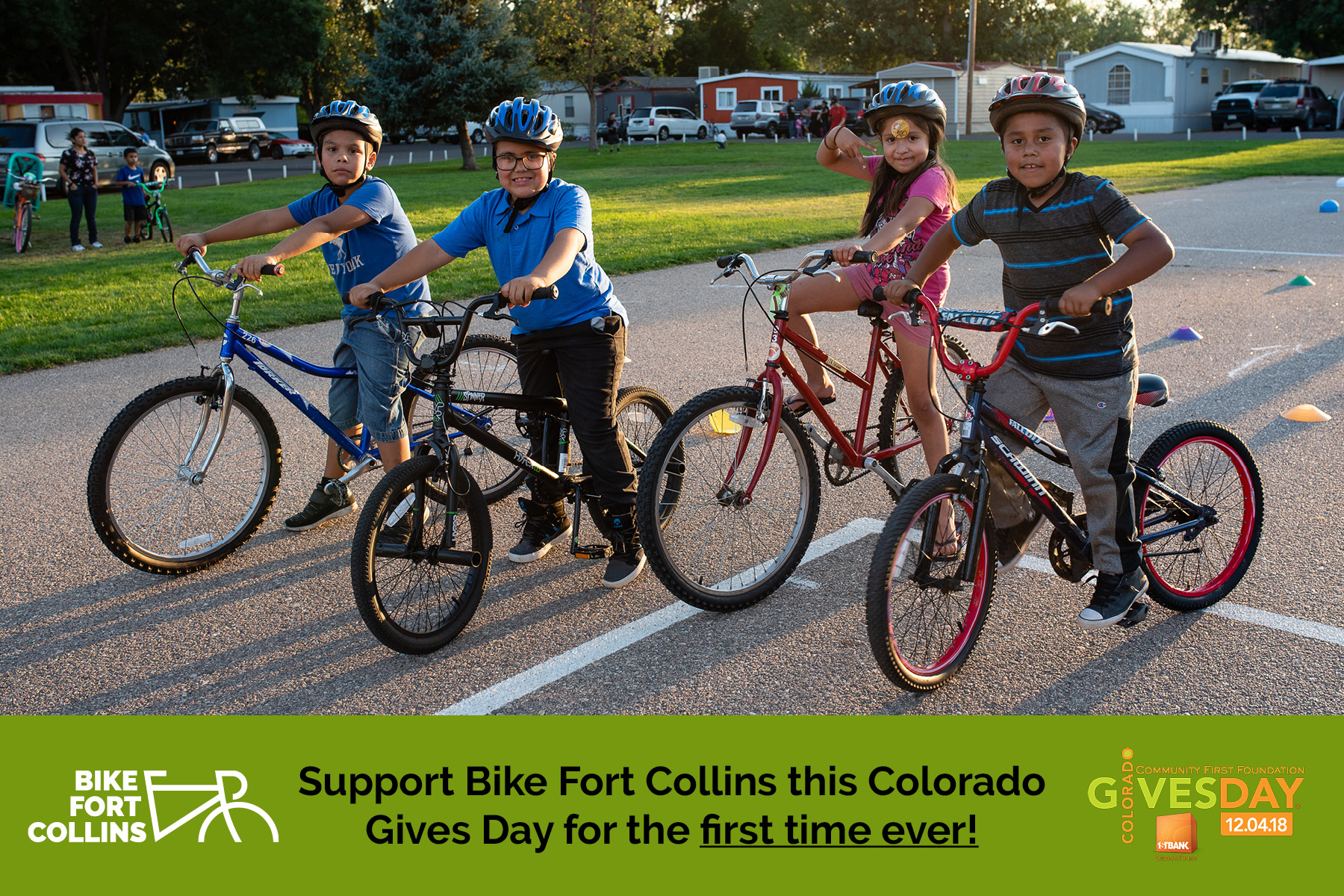
A bike is often a kid’s first taste of freedom. Go farther. Go faster. Go with friends. Just getting to go is at least half the fun. When you live in one of the nation’s most bicycle-friendly cities, having a bike and riding it is very much about belonging to your community.
For more than 12 years, Bike Fort Collins (BFC) has partnered with Poudre School District (PSD) and the City of Fort Collins to deliver the Safe Routes to School (SRTS) program, a curriculum that introduces students to safe cycling through education on topics ranging from bicycling basics to riding in groups.
It’s a volunteer-run program that Fort Collins native Sandy Charles is very much invested in – as a recreational cyclist herself and as a certified League Cycling Instructor (LCI).
She got involved more than a decade ago on a promise that she wouldn’t run any aspect of the program, but would support it by showing up to teach kids, tweens, and teens how to navigate bike paths and roadways safely while also having fun. While her role today is much more involved in coordinating with schools to deliver the curriculum (and getting the city’s help delivering bikes on massive bike trailers), the joyful theme of her work hasn’t changed a bit.
“Teaching a middle school student how to ride a bike and the sense of elation that they have, the confidence,” Sandy says. “It’s just elation.”
Over the years, she’s made a lot of connections with youth and has even introduced like-minded parents of athletic daughters who share the same unique disability.
“One family had adapted a bike so (the daughter) could ride,” Sandy said. “The other girl was also very athletic, but with the same disability, wasn’t able to ride a (standard) bike.”
Through the SRTS program, Sandy knew both girls and soon introduced their parents. Not long after, both girls were riding bikes designed with their disability – amelia – in mind.
“One girl was missing her left forearm, the other her right,” Sandy said.
One set of parents shared the recipe for the adaptive bike – a piece of PVC pipe angled so the child could use her shorter arm to control the handlebars. Soon both girls were riding their bikes.
The families, meanwhile, began offering the other a single left mitten or a single right glove as each kid needed just one of the pair.
That kind of kismet wouldn’t have happened without SRTS.
Even without those kinds of obstacles, some kids just don’t learn to ride at home, Sandy explains.
Some live near Horsetooth Reservoir where dirt roads, hills, and speeding traffic on the pavement deters the parents of learning riders. Others don’t have access to bikes or their parents didn’t learn to ride either. Affording a bike just can’t be a priority when disposable income is scarce.
It’s why SRTS brings the learning to the kids where they are: In PSD’s elementary, middle, and high schools, delivering an age-appropriate curriculum to about 30 students in each cohort.
Bikes owned by BFC are delivered by a city employee on a trailer designed to carry bikes, so every kid has a bike. Helmets are required to participate, so they’re provided too.
If a student hasn’t yet learned to ride, no problem. Sandy’s subtle detective work during scheduling reveals that information and those youth get special attention. The same is true for students with special learning or physical needs.
A student who doesn’t yet know how to ride a bike will be paired with an LCI-certified instructor to teach them individually. A student who might be physically unable to manage a bike is loaned a tagalong or wee-hoo, wheeled equipment that is attached to a bike maneuvered by an adult leader.
Cycling really is for everyone when it comes to the partnership with the school district.
PE teachers are frequently included as teachers of the program, and as long as the group of student riders stay on campus, PE teachers don’t need an LCI certification.
“When we go off-campus, we do require that a couple of LCIs be with the students, and with younger kids that means getting them to the bike paths with an LCI leading and another LCI following the group,” Sandy explains. “Older students learn that to ride in a group, they need a plan and we teach them how to read the map so they know where they’re going.”
Over the years, Sandy has watched both students and the program blossom. Today, more than 15 schools participate in Safe Routes to School.
To learn more about the history of Safe Routes to School in Fort Collins, go to https://www.fcgov.com/saferoutes/.
